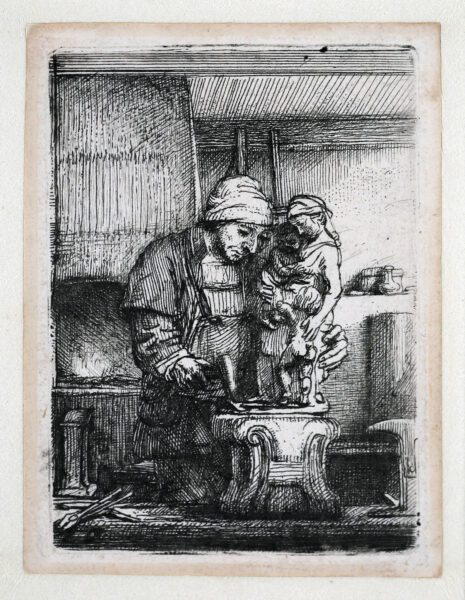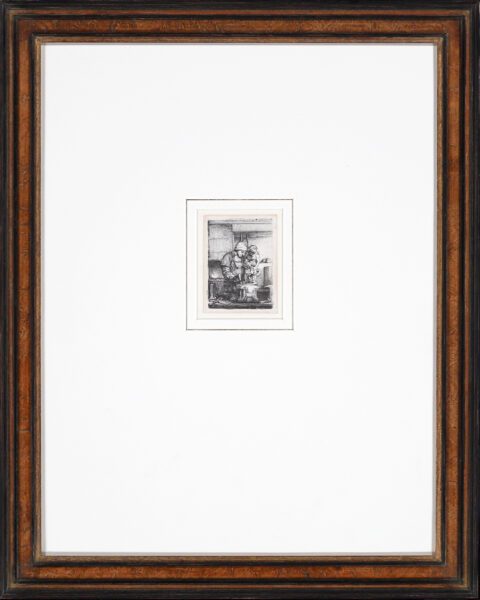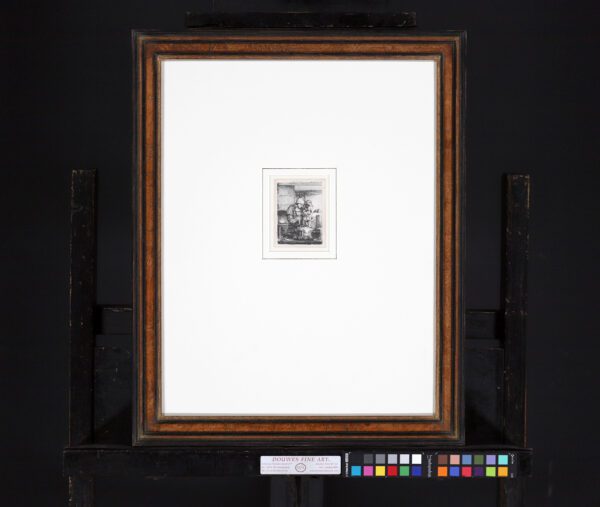“The Goldsmith”, 1655
etching and drypoint: 7,7 x 5,6 cm
signed and dated lower left (almost illegible): Rembrandt f. 1655
with good margins
"*" indicates required fields
Notes
During his lifetime, Rembrandt’s extraordinary skills as a printmaker were the main source of his international fame. Unlike his oil paintings, prints travelled light and were relatively cheap. For this reason, they soon became very popular with collectors not only within but also beyond the borders of the Netherlands.
Rembrandt’s etchings are remarkable for their high number of self-portraits (over 30 out of about 290). These are particularly collectible, perhaps due to the smaller number of states as well as the artist’s compelling and powerful presence. Unlike his stately religious scenes, or regal, posed portraits of others, which exhibit his careful and calculating brilliance as an etcher, Rembrandt’s self-portraits reveal him as an artist and a man. In them he assumes the role of the experimenting artist, approaching the most difficult of subjects – himself. These self-portraits are often described as ethereal and wistful for their notable contrasting areas of high and low etched space.
The goldsmith is a late work in Rembrandt’s printmaking career. The goldsmith of the title is shown hunching over his work. He wraps his arm around his current project, a statuette of a modest woman and two children, while he hammers out the base of his creation. Behind him to the left is a furnace for manipulating the material of his trade.
The goldsmith, however, looms larger than its diminutive size, not just because of Rembrandt’s effective technical accomplishment (using etching and drypoint), but also because of the meaning suggested by the subject matter. The way the goldsmith embraces his work recalls the action of a doting father and husband: his work is very much a labour of love. This print, then, could be aligned with Rembrandt’s own personal sense of his art practice. Accordingly, the sketchy quality of the image – like a preparatory drawing – reflects the incomplete stage of the goldsmith’s statuette. Rembrandt shares with the viewer the attentive, obsessive, enamoured experience of an artist engrossed in his craft.
An excellent 17th century print of the first state.
Literature
Bartsch 123; Hind 285;
The New Hollstein Dutch no. 289: First state (of III)
Plate in existence at the Albertina Museum, Vienna
with Nowell-Usticke (1967): C2
Provenance
- Collection Voet
- Kunsthandel Th. Laurentius,2000;
- Private collection, The Netherlands
- By descent to the current owners





